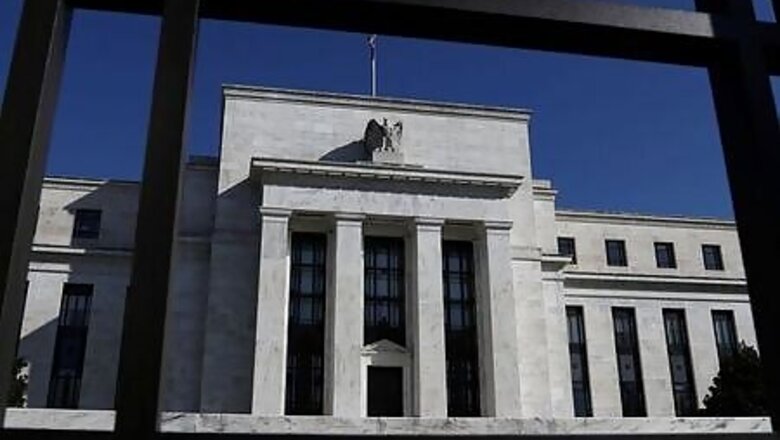
views
With a new policy framework in place, the Federal Reserve will turn to discussion of its next steps in the fight against the economic fallout of the coronavirus pandemic, and if and when to roll out additional support.
Fed Vice Chair Richard Clarida said on Monday that following release of the Fed’s new long-run strategy last week, policymakers “will be returning to a discussion of potentially refining guidance and our balance sheet communication,” the Fed’s now staple recession-fighting tools involving promises about future policy and the pace of monthly bond purchases.
Clarida, during an event organized by the Peterson Institute for International Economics in Washington, did not indicate how quickly that debate may be resolved, saying “I don’t want to prejudge where that would end up.”
However the debate presents the central bank with an immediate challenge: Whether to announce those widely anticipated next steps at its September policy meeting, its last before the November presidential election, or wait.
Some analysts have urged the Fed to act soon in order to show it is serious about the new strategy it laid out last week, trading the risk of higher inflation for stronger job growth, and argued that without such follow-up steps the new strategy seems hollow. But even they have noted the complications of acting in the midst of an election that may hinge on voter perceptions of the pandemic economy.
“It is awkward for the Fed to make a big decision either in September…or in November – immediately after the vote, with the (Federal Open Market Committee) potentially appearing political either way,” Evercore ISI vice president Krishna Guha wrote in an analysis, judging it a close call whether the Fed will announce new policy decisions in September or not.
The Fed in September of 2012 did announce its third and most open-ended program of bond purchases used to fight the last crisis, and was promptly pilloried by Republicans alleging the central bank was trying to fuel a sluggish recovery and help President Barack Obama’s re-election that November.
This time around, the Fed in March slashed interest rates to zero and announced a long list of credit programs meant to halt a meltdown in financial markets and provide loans to an array of businesses, earning praise from President Donald Trump who through the previous fall had sharply criticized Fed policymakers and called Fed Chair Jerome Powell an “enemy.”
DO MORE, BUT WHEN IT HELPS
The Fed is widely expected to do more at some point, but Fed officials in recent weeks have indicated they don’t want to commit to a course of action until the direction of the health crisis and recovery become clearer, and their policies may have more impact.
Actions like expanding bond purchases would aim to hold down the longer-term interest rates critical for home mortgage, auto and other markets – but those rates are already low. The Fed is currently buying $120 billion monthly in Treasury and mortgage-backed assets, and may at some point pledge to keep that amount in place until full employment is reached, or increase it.
In addition, with investors already anticipating the Fed will hold its target policy rate near zero for years, there may be little value in making more explicit promises about rate hikes until years down the road, if and when investors think a rate increase is more possible.
Last week several Fed policymakers said they saw little reason to offer more detailed guidance when the Fed has been clear rate hikes are far off.
Atlanta Fed president Raphael Bostic said Monday that further steps now might be counterproductive, distracting from the health, fiscal and other policies that in this moment are more important than what the Fed does next.
“As long as we have uncertainty about the trajectory of the pandemic there is only so much our policies are going to be able to do,” he said.
Other Fed officials have made similar comments, arguing that the Fed’s ability to “stimulate” spending may be more important when people feel it safer to begin traveling, for example, and spending and investing with more confidence.
The Fed’s new strategy implicitly points toward lower interest rates for longer, with the central bank saying it would allow higher inflation to offset periods of weak price increases in hopes of letting job markets tighten, wages rise, and workers gain more of the benefits from economic expansions.
What that means in practice may unfold over time, Clarida said on Monday. “I would expect as the economy recovers and as we approach our dual mandate goals there will be further communication,” about the Fed’s plans.
Disclaimer: This post has been auto-published from an agency feed without any modifications to the text and has not been reviewed by an editor




















Comments
0 comment